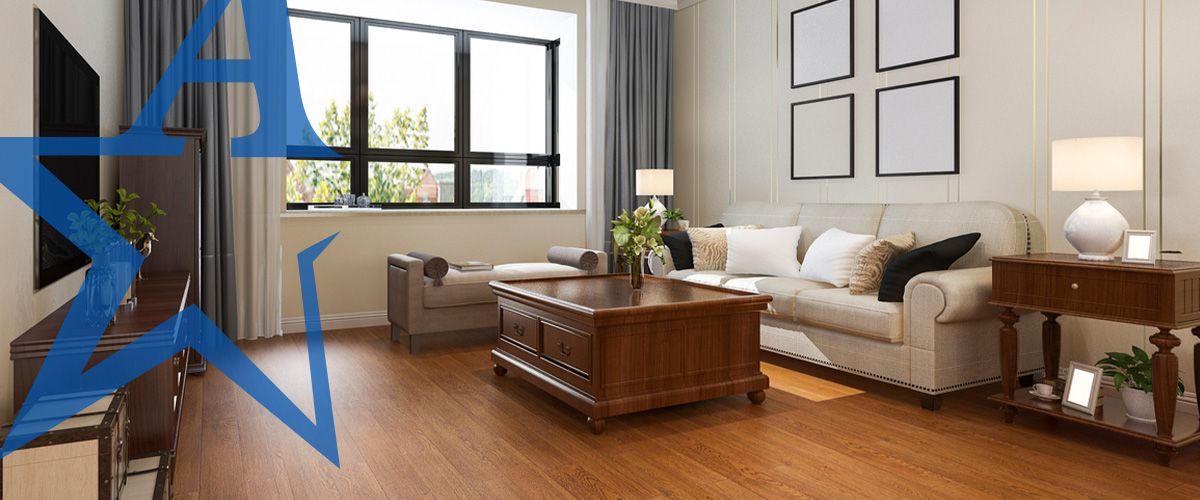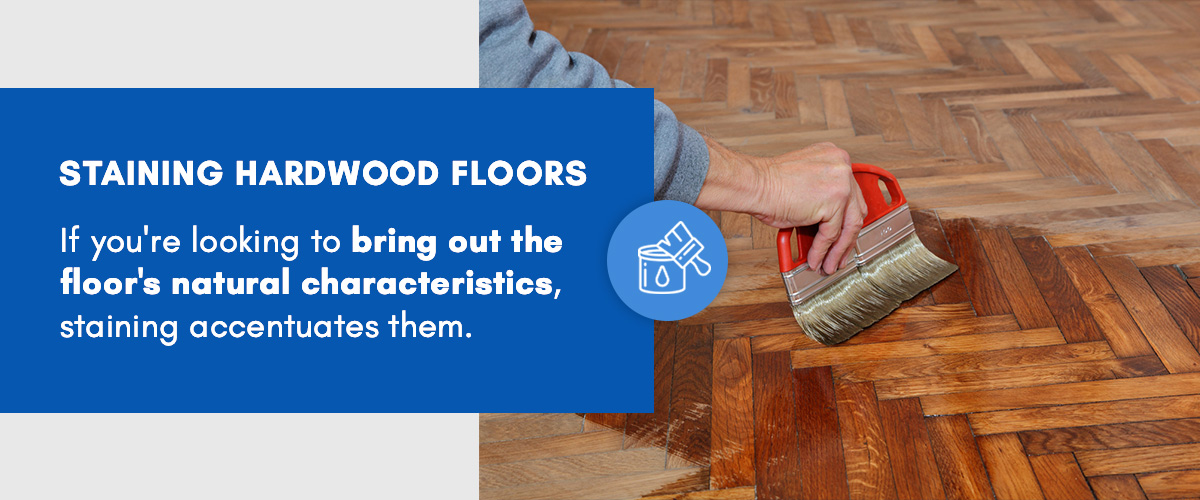Natural vs. Stained Hardwood Floors

Hardwood’s natural beauty and charm complement its durability. Many homeowners leave hardwood floors in their original state, but you can stain or paint them to change the look. Paint and stains create magnificent effects on wood floors. Choosing the perfect finish for your hardwood floor is easier when you know the difference between natural, stained and painted wood.
Natural Hardwood Floors
Hardwood comes in various species with unique hues and grains, from the warm reddish browns of mahogany to the creamy whites of birch. With so many options, there may be a natural hardwood that complements your home’s style.
Natural hardwood floors are ideal for homeowners who prefer timeless traditional designs. They are also a cost-effective and easy way to manage your flooring without incurring extra costs. Many people with exotic or unique hardwood flooring will leave it in its natural state. You only need to apply a clear finish, varnish and sealant.
Floors endure daily wear and may show signs of damage over time. Staining or painting the floor is more affordable than replacing it when this happens. A darker paint or stain can mask the blemishes. If you prefer a different look to natural wood, staining or painting allows you to customize the wood’s aesthetic. Consider these options if you want a fresh look in your home or to enhance the grain of your wooden floor.
Staining Hardwood Floors
Hardwood is often stained to mimic unique and exotic hardwood species. For example, you can stain a white oak or beech black, making it look like an ebony floor. Exotic species like walnut, maple, mahogany and cherry look beautiful in their natural state and may not require staining. Why buy expensive, gorgeous wood and then use paint and stains to hide it?
Staining your hardwood floor is a significant decision because you will live with it for years. The exercise is expensive and requires vacating the room for an extended period. The task is daunting because there are various shades and hardwood floor stain colors to select from. Whatever colors and shades you choose will impact the overall style of your home because a floor is a focal point in a room.

Advantages of Staining Hardwood Floors
The pros of staining hardwood floors include the following:
- Enhances the wood’s natural beauty: Unlike paint, stains let the grain of the original wood shine through. Staining may change the natural shade but is not meant to transform it.
- Imitates exotic species: By applying stains, you can make natural hardwood look more exotic.
- Multiple stain colors and designs: Stains come in many shades. The hue you settle for should complement other design elements in the room. Stain variations range from dark to red, honey to coffee, and brown to gray. You can also make decorative patterns on the floor using two dyes to create a checkerboard design.
- Revamp your floor’s look: Staining allows you to refresh your flooring. Choose a darker stain for an elegant, bolder look.
Disadvantages of Staining Hardwood
Before going ahead with staining your floor, you should be aware of the following drawbacks:
- Highlights scratches: The wood absorbs the stain and accentuates any marks.
- Time-intensive process: Staining requires patience. Sufficient drying time before finishing the floor is vital for the best results.
- Bleedback: Wood can absorb a certain amount of stain. Exceeding the limit causes the stain to rise to the surface, known as ‘bleedback”.
- Results depend on the wood: The tight grain in woods like birch or maple makes it harder for stain pigments to absorb. Sap in wood, such as pine, also interferes with staining.
When Should You Choose Staining?
If you’re looking to bring out the floor’s natural characteristics, staining accentuates them. It works with the wood’s natural grains and hues to create a striking appearance. Staining may give standard hardwood floors like white or red oak an exotic look. Oak floors are dye-friendly, and you can expect excellent results with the proper techniques.
Some finishes can give floors an unappealing yellow, orange, or washed-out effect. In such cases, staining will transform your wooden floor. Sand and buff the floor to avoid the pigment settling in scratches.
Staining is also recommended for floors damaged by pets, pot plants or water. Instead of replacing the entire floor, staining can revitalize its appearance. This method works for surface-level rather than severe water damage.
Hardwood flooring is attractive whether in its natural form or stained. The choice depends on the floor’s condition and your style.


